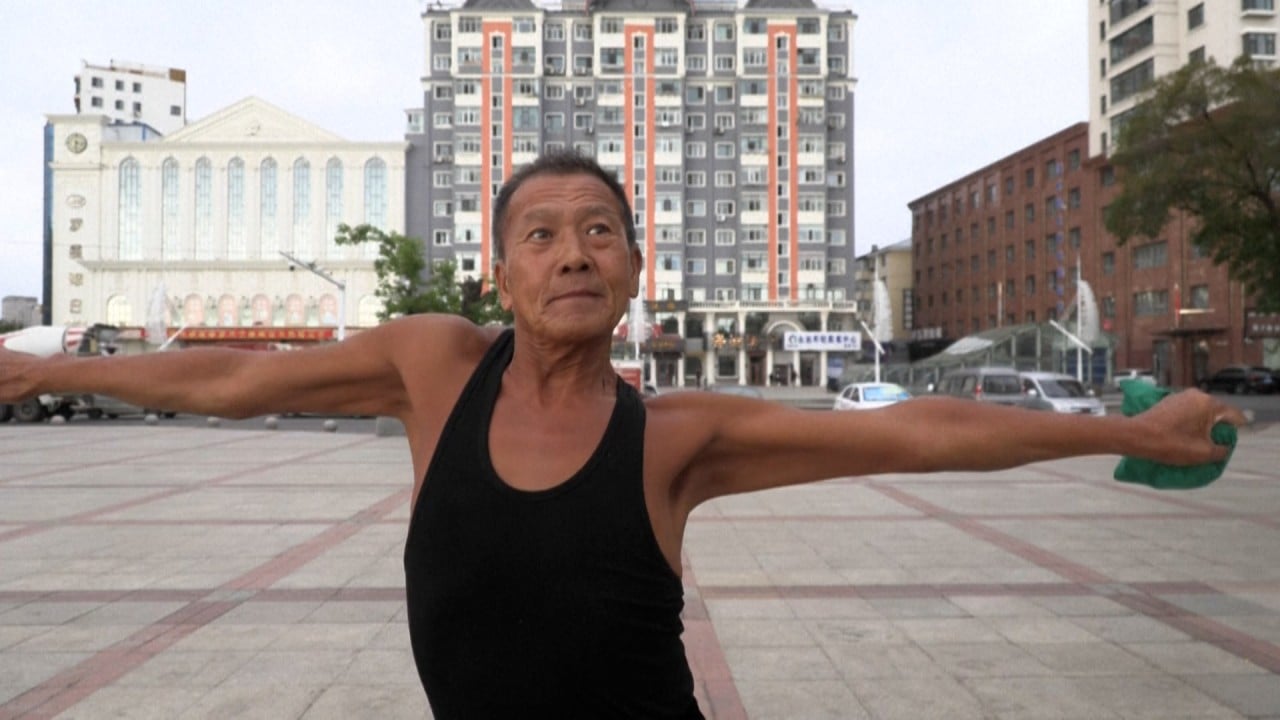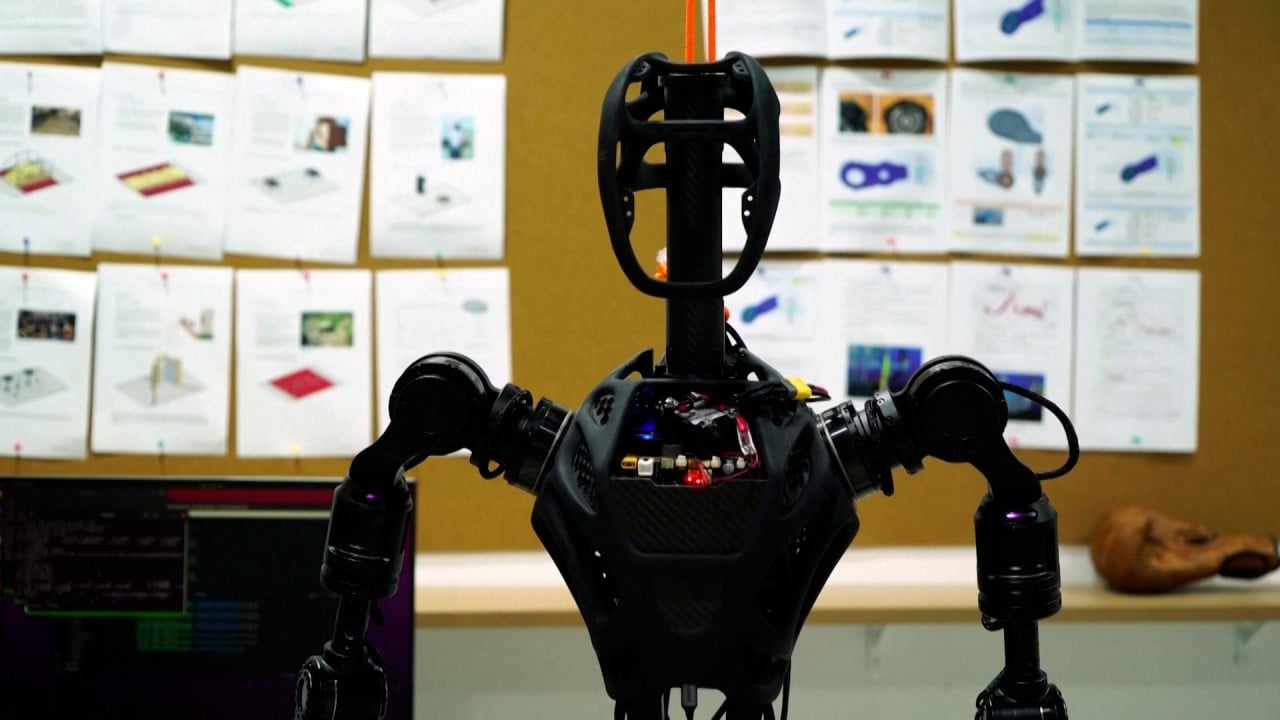
Chinese scientists claim anti-ageing breakthrough with spinal cord discovery
- Researchers find protein at ‘toxic’ levels surrounding motor neurons of older monkeys and test whether vitamin C really makes a difference
- The study could fill a gap in scientific understanding of the relationship between ageing and the spine’s critical role in health and mobility
The cell subtype surrounds the motor neurons in the spinal cord and is believed to accelerate the ageing process, making it a factor in the shuffling gait common among the elderly, according to an unedited paper published by the peer-reviewed journal Nature on October 31.
The study involved researchers from three labs who were jointly supervised by Liu Guanghui and Qu Jing from the Chinese Academy of Sciences’ Institute of Zoology, and Zhang Weiqi at the academy’s Beijing Institute of Genomics.
The team hopes its discovery could fill a knowledge gap in the poorly understood mechanisms underlying the relationship between ageing and the spinal cord’s critical role in sustaining health and mobility.
In an interview with the state-owned Science and Technology Daily, Liu said the team analysed single cells to identify unique groups that developed around ageing motor neurons in the spinal cords of elderly primates.
“These distinct cell clusters must have a specific life purpose. Our further investigation revealed that they secrete a ‘toxic’ protein that contributes to accelerating the ageing of motor neurons,” he said.
How to prevent osteoporosis, especially in women after menopause
According to the paper, the cell clusters activate specific signals to accelerate the ageing process in motor neurons by releasing a protein called chitinase-1 (CHIT1), normally present at very low concentrations in the human body.
CHIT1 can help the body fight against pathogens containing chitin but in some circumstances can be activated to multiply by thousands of times, leading to inflammation or damage, the researchers found.
The study observed that an excess of this “toxic” protein in the cerebrospinal fluid of monkeys could damage motor function and promote other signs of ageing.
Despite accounting for only about 0.3-0.4 per cent of all spinal cord cells, motor neurons are the principal actors in regulating body movement. They control the body’s motor functions by directing skeletal muscles throughout the body.
“Our research also confirms that motor neurons are the most sensitive cells in the spinal cord when it comes to ageing,” the paper said.
While the findings were based on animal experiments, the researchers indicated that increased CHIT1 had also been observed in the cerebrospinal fluid and serum of elderly people, who experienced similar phenomena as they age.
The scientists hope their discovery can open the door to the prevention and treatment of various age-related chronic diseases, based on the mechanisms driving the ageing of the spinal cord.
After identifying the “culprit”, the researchers next set out to determine if targeting the protein could reverse the ageing process of the spinal cord, which plays a crucial role in the autonomous activity of the essential organs as well as motor function.
According to the paper, the researchers found that the process could indeed be blocked, by activating neutralising antibodies – the crucial “warriors” of our immune systems – which will target CHIT1, suggesting a potential strategy for the development of new treatments.
Traditional Chinese medicine’s hidden scientific foundation revealed
The researchers also tested whether vitamin C may play a role in reducing the signs of ageing. The everyday diet supplement has been around for decades but claims that it has anti-ageing properties have not been unequivocally proven in clinical trials.
In a three-year trial, the researchers tested the effects of vitamin C on 10 cynomolgus monkeys aged 17-18 years that were randomly divided in to two groups.
One group was given a daily dose of vitamin C at 30mg/kg – dissolved in drinking water and given after breakfast – for 40 months. The other monkeys received the same quantity of drinking water, but without the supplement, to act as a control.
The researchers reported a “significant” improvement in the ageing-related indicators for the elderly monkeys’ motor neurons, suggesting that oral vitamin C supplements could be beneficial.
Beauty lovers want single-ingredient skincare, not fancy formulas
The spinal cord is an extension of the central nervous system and is responsible for various motor functions in the body’s trunk and limbs, as well as sending neural information between the brain and the peripheral nervous system.
Spinal cord ageing can lead to a rapid decline in the motor abilities of people over 60, increasing the likelihood of falls. But it is also a major contributing factor to the coexistence of multiple chronic diseases among the elderly.
Statistics have shown that individuals aged above 65 experience an average of one or more falls per year, with 20-30 per cent of cases leading to injuries which significantly impair quality of life.
At the same time, spinal cord ageing can lead to multiple organ system dysfunctions, causing problems such as arrhythmias, blood pressure irregularities, shortness of breath, and other issues.
Biologist Gu Feng, who specialises in gene editing and genetic diseases and was not involved in the study, said motor neurons represented “a major, maybe the most important, category of cells in the spinal cord”.
“As people age, signs of ageing manifest in various ways, including in muscles, skin, and organs such as the ovaries, and what’s also evident and significant is the ageing of the nervous system,” he said.
“The nervous system is a pretty important part when studying the mechanism of ageing, and I think their work has led to many novel and valuable discoveries.”
By identifying a new type of cell and subsequent potential interventions, the relatively comprehensive study held “great implications” for future anti-ageing treatments, Gu added.



